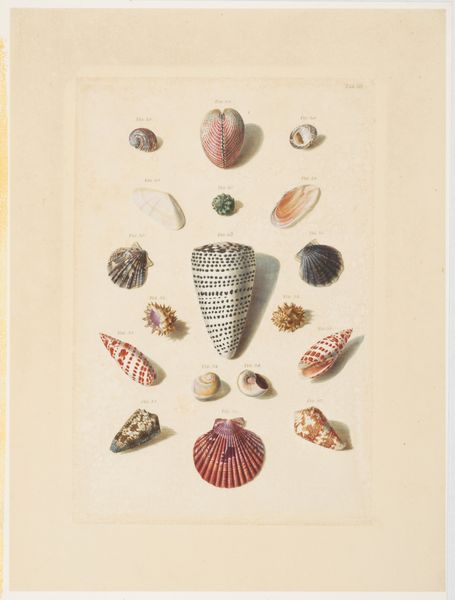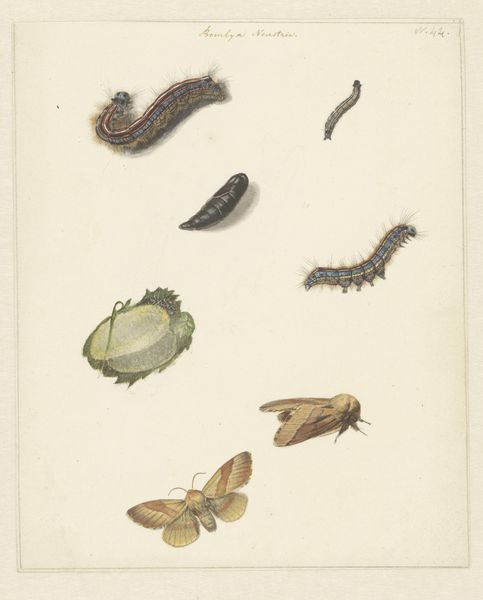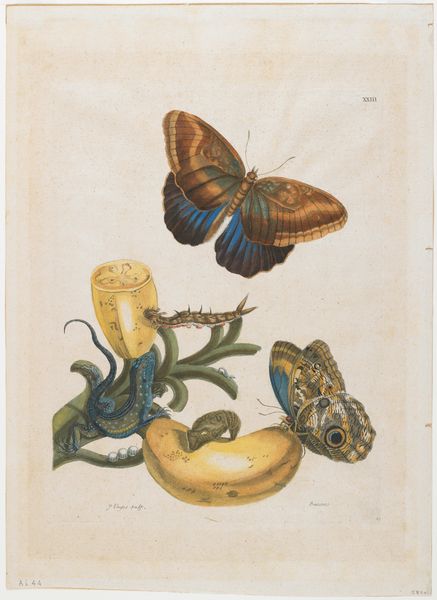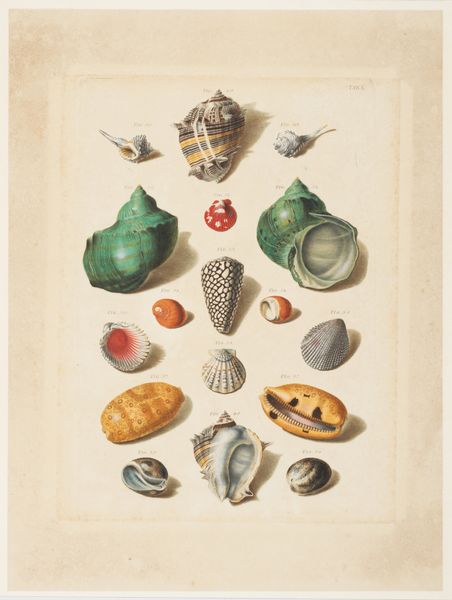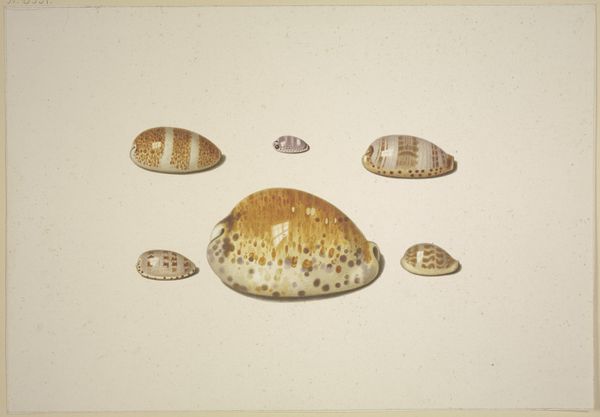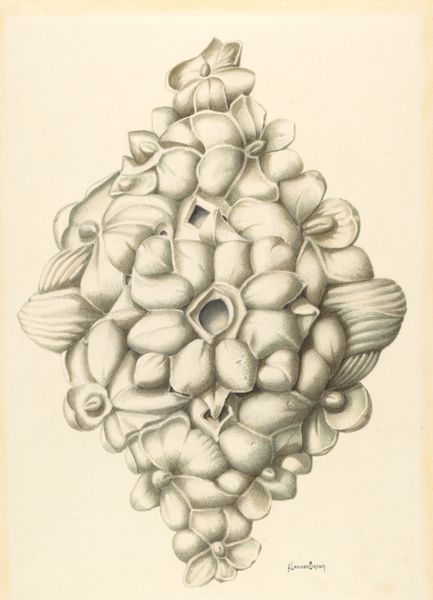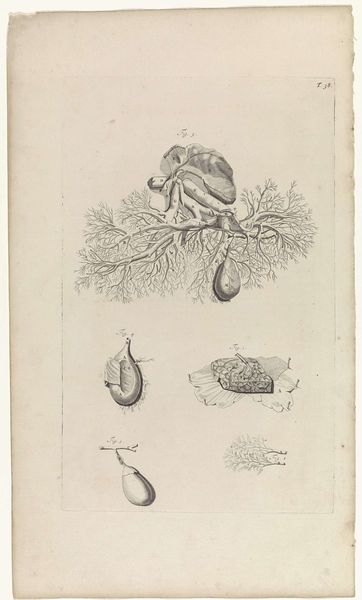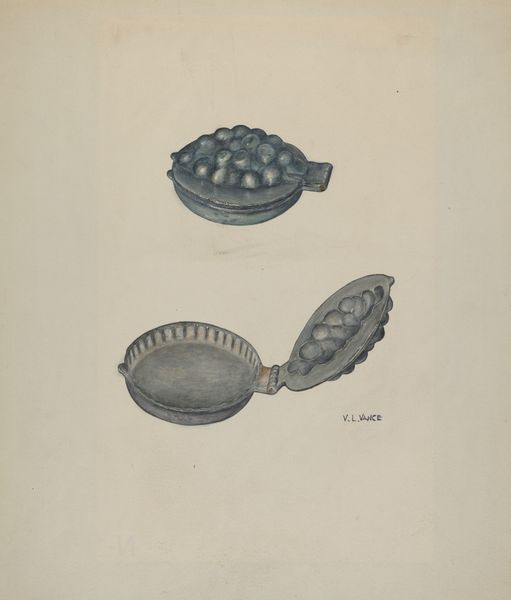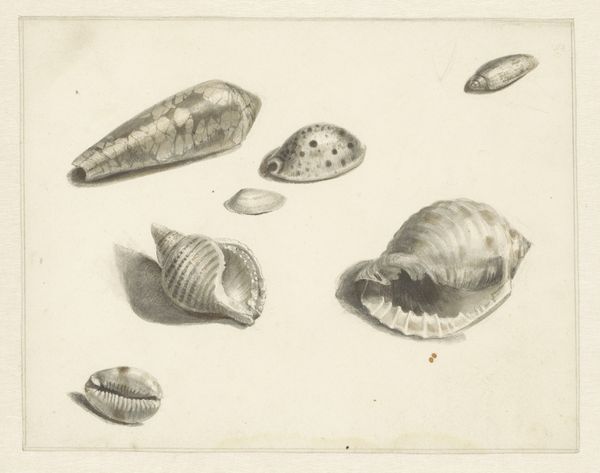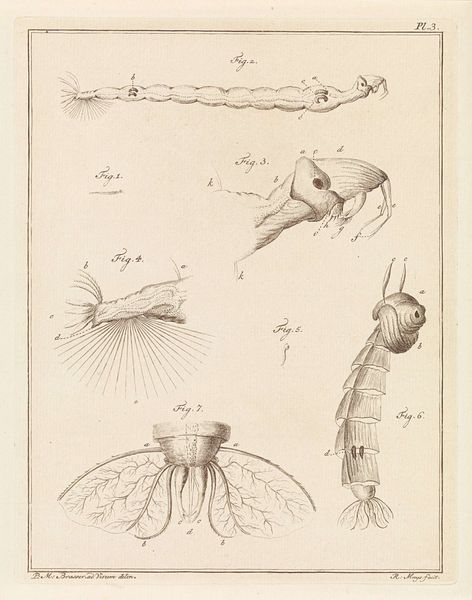
drawing, painting, gouache, watercolor
#
gouache
#
drawing
#
baroque
#
painting
#
gouache
#
watercolor
#
decorative-art
#
naturalism
#
decorative art
Copyright: Public Domain
Editor: This is "Metamorphosis of the Lappet," a gouache and watercolor piece by Maria Sibylla Merian, created after 1679. It's a beautifully detailed rendering of the Lappet moth's life cycle. What strikes me is how meticulously the artist captured each stage. What's your perspective on it? Curator: Considering Merian's background as a naturalist and scientific illustrator, the piece is fascinating from a materialist perspective. She wasn't just depicting pretty insects; she was meticulously documenting the natural world. Think about the labor involved, the sheer patience required to observe and then recreate these details using gouache and watercolor. Editor: Yes, it’s quite evident how important accuracy was to Merian. How might the materials available to her influenced her art? Curator: Exactly! Access to high-quality pigments, brushes, and paper determined the level of detail she could achieve. The cost of these materials also suggests a certain level of patronage and economic stability. We can think of each stage of the insect as it moves through its own production stage, in a parallel with human activity. What’s most intriguing, don't you think? How these materials interact with the historical context, especially regarding scientific exploration and artistic conventions of the time? Editor: It’s an intersection I had not fully considered! Considering how she straddled both science and art, this close attention to the materiality behind scientific illustrations makes perfect sense! I really like the emphasis you bring to the materials, social context and production to challenge the boundary between high art and the scientific documentation of the Lappet moth’s life cycle. Curator: Precisely. By examining the labor and materials involved, we move beyond simply admiring the aesthetic beauty and can then begin to explore the socio-economic underpinnings that made such a work possible.
Comments
stadelmuseum about 2 years ago
⋮
Merian’s precious vellum drawings with motifs from the Caterpillar Book, published since 1679, were long regarded as the models for the engravings. They have recently proven, however, to be very carefully executed gouache drawings over transfer prints of the plates from the Caterpillar Book, undoubtedly intended for affluent buyers. In the Caterpillar Book, Merian explains that the “miracle caterpillars” depicted in Obj. No. 1495 Z had pupated immediately, before she had been able to identify and draw the corresponding host plant.
Join the conversation
Join millions of artists and users on Artera today and experience the ultimate creative platform.
